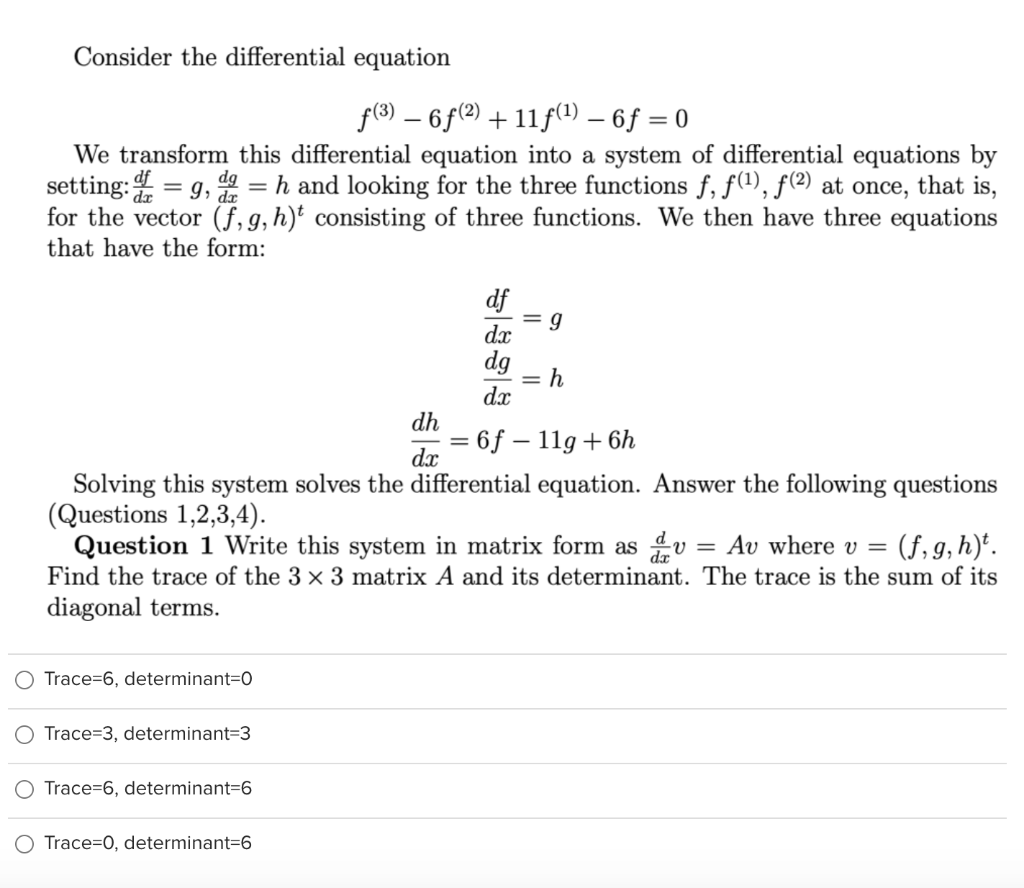Consider the differential equation f(8) – 6 f(2) + 11f(1) – 6f = 0 We transform this differential equation into a system of differential equations by setting: = 9, = h and looking for the three functions f, f(1), f(2) at once, that is, for the vector (f, g, h)t consisting of three functions. We then have three equations that have the form: df = g dx dg h
Consider the differential equation f(8) – 6 f(2) + 11f(1) – 6f = 0 We transform this differential equation into a system of differential equations by setting: = 9, = h and looking for the three functions f, f(1), f(2) at once, that is, for the vector (f, g, h)t consisting of three functions. We then have three equations that have the form: df = g dx dg h
Linear Algebra: A Modern Introduction
4th Edition
ISBN:9781285463247
Author:David Poole
Publisher:David Poole
Chapter4: Eigenvalues And Eigenvectors
Section4.6: Applications And The Perron-frobenius Theorem
Problem 69EQ: Let x=x(t) be a twice-differentiable function and consider the second order differential equation...
Related questions
Question
4

Transcribed Image Text:Consider the differential equation
f(8) – 6f(?) + 11f(1) – 6ƒ = 0
We transform this differential equation into a system of differential equations by
setting: 4 = g, = h and looking for the three functions f, f(1), f(2) at once, that is,
for the vector (f,g,h)* consisting of three functions. We then have three equations
that have the form:
df
= g
dx
dg
= h
dx
dh
= 6f – 11g +6h
dx
Solving this system solves the differential equation. Answer the following questions
(Questions 1,2,3,4).
Question 1 Write this system in matrix form as dv = Av where v = (f,g,h)*.
Find the trace of the 3 x 3 matrix A and its determinant. The trace is the sum of its
diagonal terms.
O Trace=6, determinant=0
Trace=3, determinant=3
Trace=6, determinant=6
Trace=0, determinant=6
Expert Solution
This question has been solved!
Explore an expertly crafted, step-by-step solution for a thorough understanding of key concepts.
This is a popular solution!
Trending now
This is a popular solution!
Step by step
Solved in 3 steps

Recommended textbooks for you

Linear Algebra: A Modern Introduction
Algebra
ISBN:
9781285463247
Author:
David Poole
Publisher:
Cengage Learning

Linear Algebra: A Modern Introduction
Algebra
ISBN:
9781285463247
Author:
David Poole
Publisher:
Cengage Learning